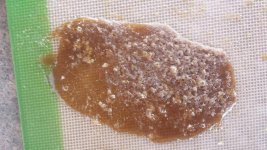shredGnar
Member
So I ran my bho in a vac chamber on top of a hot plate...approx 110° F.
The edges are nice..very glass like and you can see thru it.
The inside bit is cloudy and has bubbles in it but it's still quite hard..
Maybe I ran it too long?
Also I am running a 5cfm robinaire 2 stage vac pump in a 3 gal vac chamber but only achieving 24" of mercury according to the gauge...but I think maybe it's because I'm already at approx 7500 ft above sea level And starting at a lower air pressure.
Tips are appreciated!
The edges are nice..very glass like and you can see thru it.
The inside bit is cloudy and has bubbles in it but it's still quite hard..
Maybe I ran it too long?
Also I am running a 5cfm robinaire 2 stage vac pump in a 3 gal vac chamber but only achieving 24" of mercury according to the gauge...but I think maybe it's because I'm already at approx 7500 ft above sea level And starting at a lower air pressure.
Tips are appreciated!





